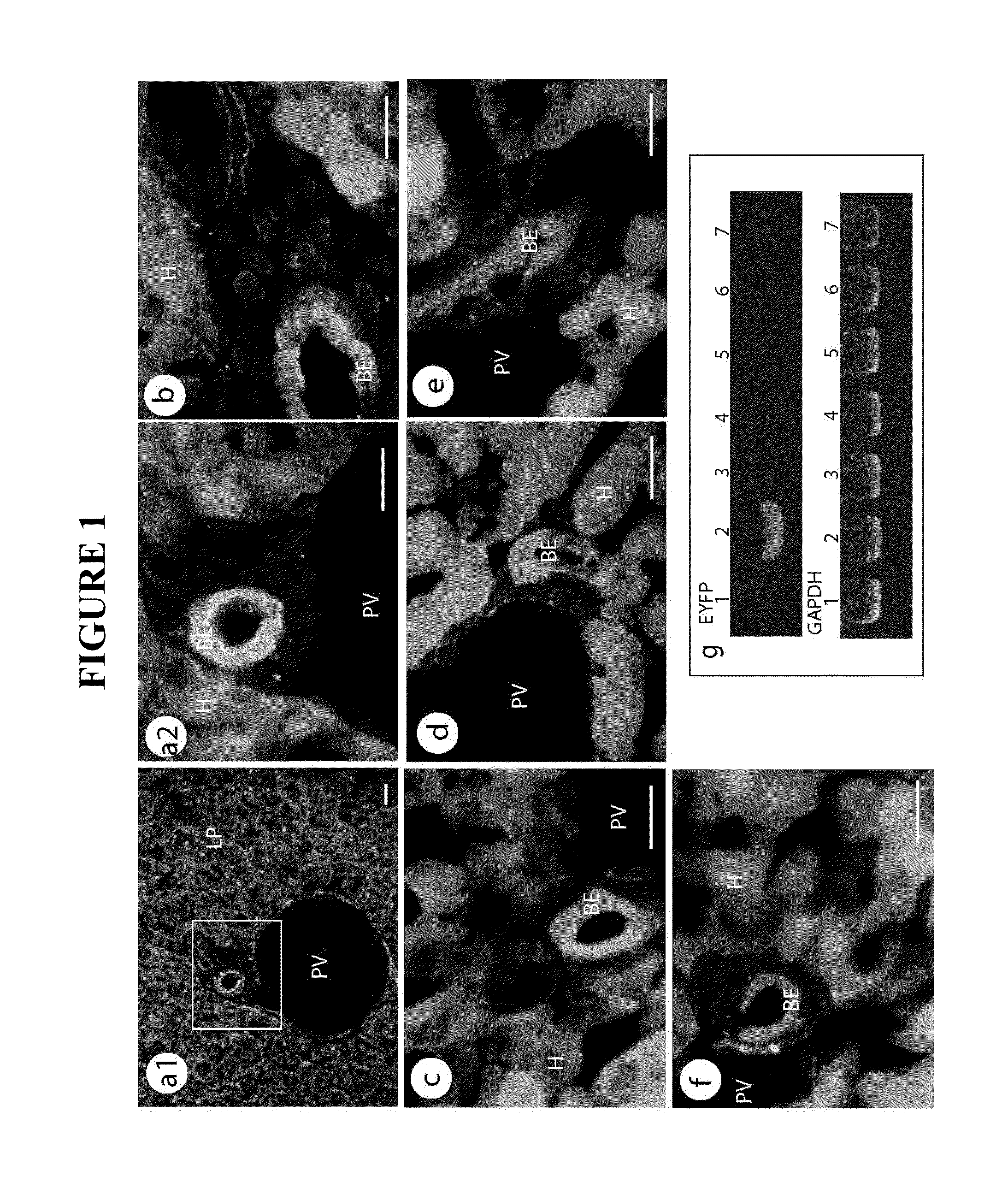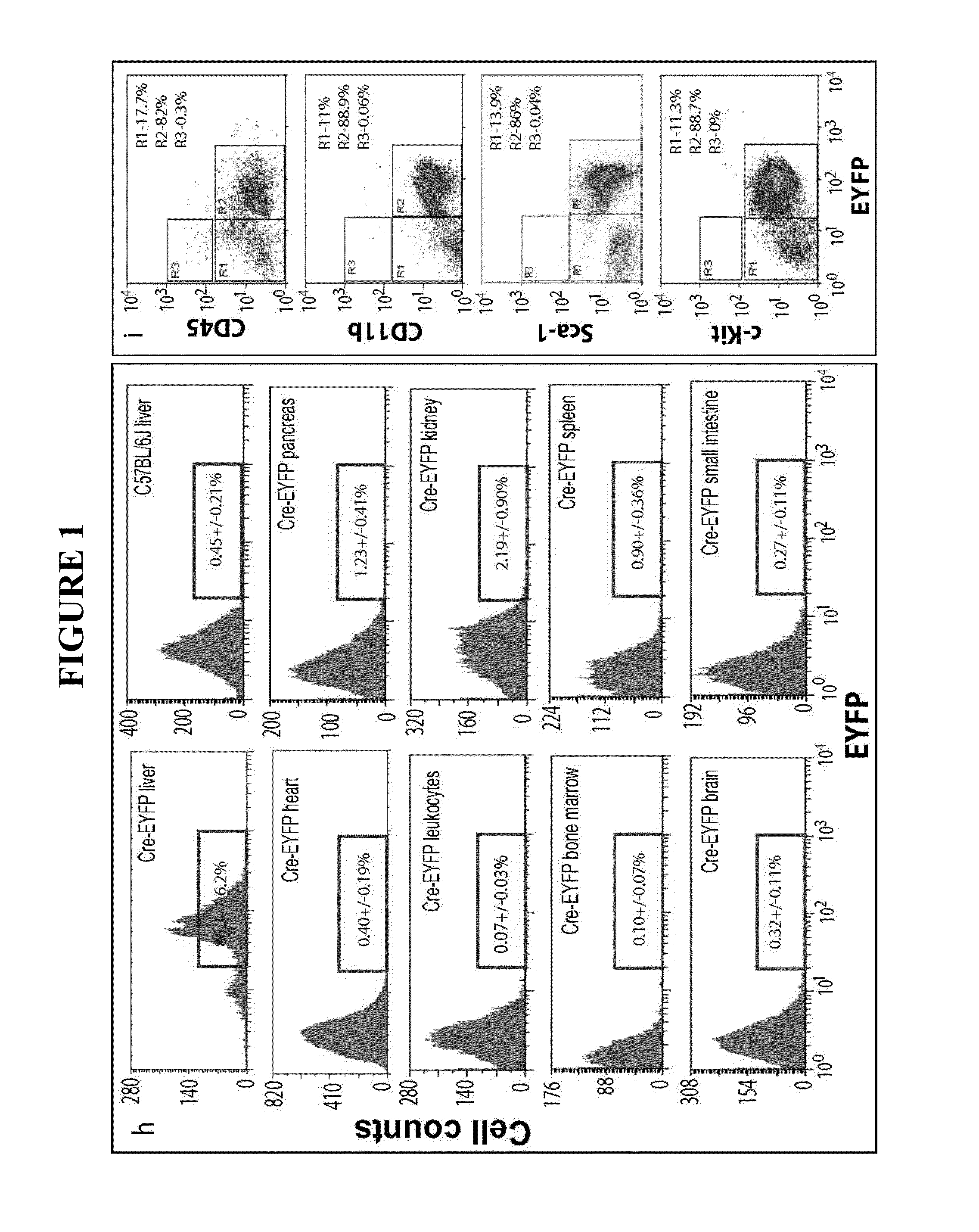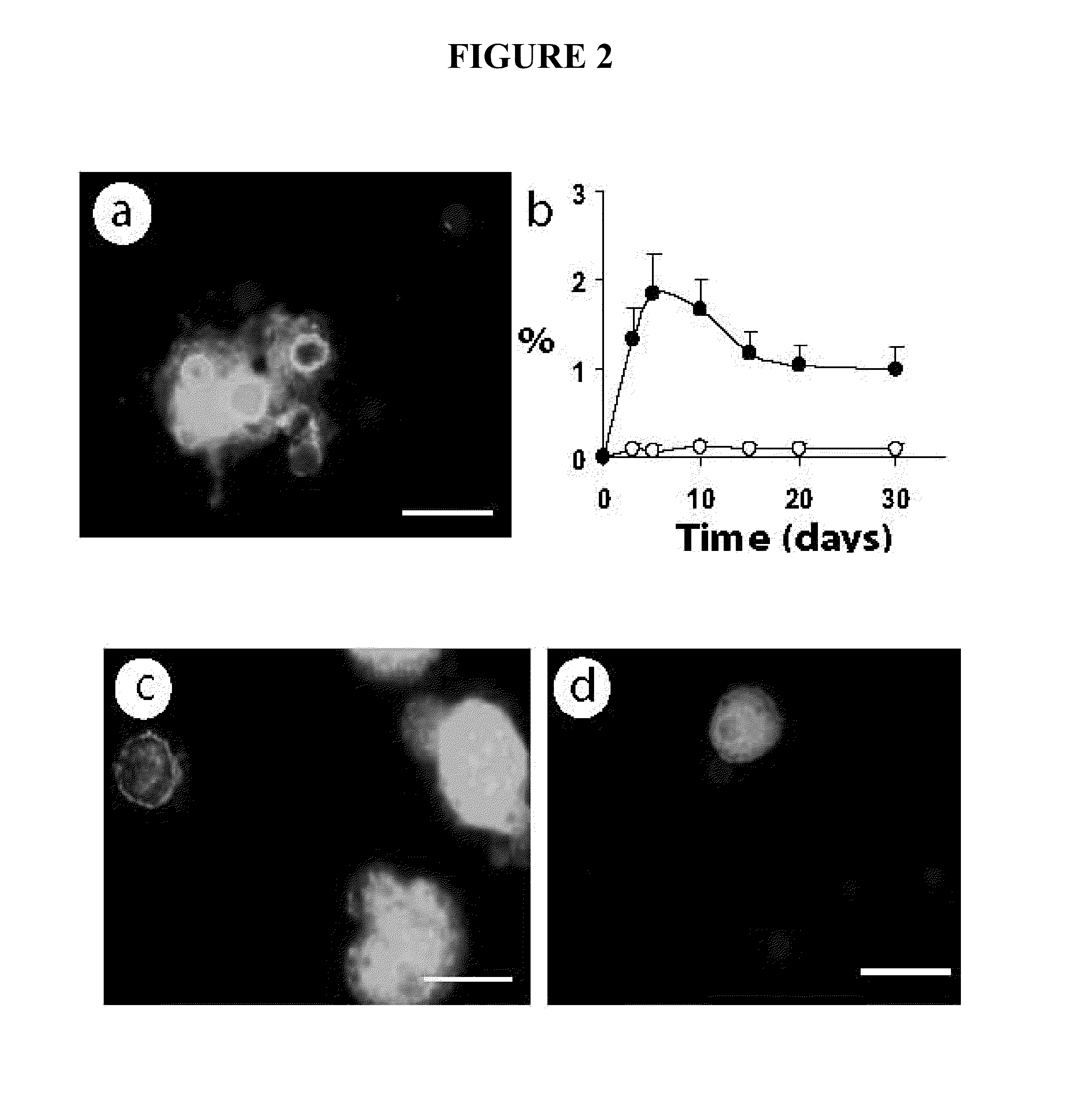Cardioprotective role of hepatic cells and hepatocyte secretory factors in myocardial ischemia
a technology of hepatic cells and secretory factors, which is applied in the direction of osteogenic factors, peptide/protein ingredients, extracellular fluid disorders, etc., can solve the problems of myocardial infarction and dysfunction, human death, and reoccurrence of myocardial ischemia, so as to reduce myocardial infarction, increase liver cell migration, and improve cardiac mechanical performance
- Summary
- Abstract
- Description
- Claims
- Application Information
AI Technical Summary
Benefits of technology
Problems solved by technology
Method used
Image
Examples
example 1
Cardioprotective Role of Hepatic Cells in Myocardial Ischemia
Experimental Procedures
Transgenic Mouse Models
[0097]The Cre / loxP transgenic mouse models have been widely used for identifying and tracking specific cell types63,64. In this Example, Cre-EYFP and Cre-EYFP-IL6− / − mouse models were used for identifying hepatic cells in the circulatory system and ischemic lesion of myocardium. The Cre-EYFP model was established by crossing an Alb-Cre+ / + mouse strain [B6.Cg-Tg(Alb-cre)21Mgn / J, C57BL / 6J background, Jackson Laboratory] with a conditional EYFP+ / + mouse strain [B6.129X1-Gt(ROSA)26Sortm1(EYFP)Cos / J, C57BL / 6J background, Jackson Laboratory] expressing the EYFP gene controlled by a loxP-flanked stop sequence, which blocks EYFP expression. When the albumin gene promoter-driven Cre recombinase gene is expressed in the liver, the stop sequence of the EYFP gene between the loxP sites is deleted by the Cre recombinase, resulting in liver-specific EYFP expression. The expression of the Cre...
example 2
Alleviation of Ischemic Myocardial Injury by Administration of Hepatic Cell-Derived Factors
[0145]Myocardial ischemia induces cardiomyocyte injury and death, resulting in impairment of cardiac function. In spite of extensive investigations, few clinically effective agents have been developed for protecting myocardium from ischemic injury. Myocardial ischemia remains a leading cause of human death. As adult cardiomyocytes possess a limited capacity of self-protection and regeneration, mechanisms involving nonmyocytic cells are activated to support the survival and performance of cardiomyocytes. As described above, it has been determined that the liver can respond to myocardial ischemia to mobilize its cells to the circulatory system in a mouse model. While a fraction of mobilized hepatic cells engrafted to the lesion of ischemia, the remaining hepatic cells degraded within the circulatory system and released cell contents, which may also be used for effective cardioprotection in myoca...
example 3
Identification of Hepatocyte Secreted Factors
[0149]This example describes the identification of proteins secreted by hepatocytes to aid healing of ischemic injury.
Methods
[0150]Coronary arterial ligation and partial hepatectomy were performed as described in Example 1 using C57BL / 6J mice.
Identification of Hepatocyte-Expressed Proteins Effective for Protection of Ischemic Myocardium
[0151]Hepatocytes exhibited upregulation of numbers of secretory factors in response to myocardial ischemia. These proteins were screened for selecting factors beneficial to protection of ischemic myocardium. The mouse recombinant forms of the hepatocyte-expressed secretory proteins, including AGP2, BUMPER, FGF21, CXCL13, NRG4, PRG4, and TFF3, were administered individually to mice with acute myocardial ischemia for testing their role in protection of ischemic myocardium. Recombinant BUMPER and CXCL13 were obtained from R&D Systems, FGF21 was from Prospec, and AGP2, NRG4, PRG4, and TFF3 were from Abnova. Fo...
PUM
| Property | Measurement | Unit |
|---|---|---|
| thickness | aaaaa | aaaaa |
| pH | aaaaa | aaaaa |
| pH | aaaaa | aaaaa |
Abstract
Description
Claims
Application Information
 Login to View More
Login to View More - R&D
- Intellectual Property
- Life Sciences
- Materials
- Tech Scout
- Unparalleled Data Quality
- Higher Quality Content
- 60% Fewer Hallucinations
Browse by: Latest US Patents, China's latest patents, Technical Efficacy Thesaurus, Application Domain, Technology Topic, Popular Technical Reports.
© 2025 PatSnap. All rights reserved.Legal|Privacy policy|Modern Slavery Act Transparency Statement|Sitemap|About US| Contact US: help@patsnap.com



